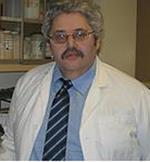Towards understanding the role of NCF2 in SLE
Abstract
We recently presented compelling evidence that NCF2 (Neutrophil Cytosolic Factor 2) is a risk factor for SLE. NCF2 is a component of the leukocyte NADPH-oxidase complex that produces reactive oxygen species (ROS). We show that NCF2 is strongly associated with increased SLE risk in 3 independent populations, one a family-based study and the other two case-control replication studies. The association between NCF2 and SLE can be attributed almost exclusively to a single non-synonymous coding mutation in exon 12, the effect of which is the substitution of histidine (His)-389 with glutamine (Gln) (H389Q) in the PB1 domain of the NCF2 protein.
Computational modeling suggests that the NCF2 H389Q mutation reduces the binding efficiency of NCF2 with the guanine nucleotide exchange factors Vav1. Moreover, replacing H389 with Q results in a 1.5 Kcal/mol weaker binding in the predicted position. To examine the effect of NCF2 H389Q mutation on NADPH oxidase function, site specific mutations at the 389 position in NCF2 were tested. Results show that an H389Q mutation causes a 50% decrease in ROS production induced by the activation of the Vav dependent Fc-gamma-R-elicited NADPH oxidase activity.
We propose to extend our finding and assess the functional consequences of a hypomorphic NCF2 in lupus patients using state of the art RNA-seq experiments on cellular subsets from patients with predetermined NCF2 genotype. In addition we propose novel mouse models with complete or partial defects in Ncf2 to ascertain the immunological consequences and the impact on lupus development.




